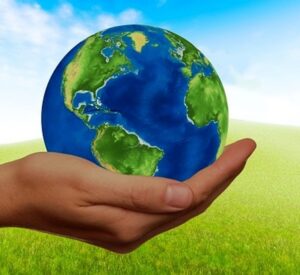Earth Day 2024: Know the Unveiling the Power of Our Earth

“Planet vs. Plastics,” this year’s Earth Day 2024 theme, aims to raise public awareness of the detrimental effects plastic waste has on both human and environmental health.
Every year on April 22, people celebrate Earth Day to show their support for protecting the environment. EARTHDAY.ORG was established on April 22, 1970, and since then, it has organized events for one billion people in more than 193 nations. This year’s official theme is “Planet vs. Plastics.” Earth Day will celebrate its 55th anniversary in 2025.She won an international match against Russian female wrestler Vera Chistylin in less than two minutes.
At a 1969 UNESCO session in San Francisco, peace campaigner John McConnell suggested March 21, 1970—the first day of spring in the northern hemisphere—as the date for a day to honor the Earth and the idea of peace. Afterwards, McConnell and Secretary General U Thant issued a proclamation at the UN publicly announcing this day of nature’s equipoise. One month later, on April 22, 1970, US Senator Gaylord Nelson floated the notion of a national teach-in on environmental issues. As the National Coordinator, he hired Denis Hayes, a young activist. Nelson and Hayes dubbed the event “Earth Day”.
Denis and his group decided to include the entire nation in the initial teach-in idea. With over 20 million attendees, the first Earth Day rally remains the largest single-day protest in human history. Not focusing on the environment, but nonetheless important partners have a big impact. For example, the principal external financial and organizational supporter of the first Earth Day was the United Auto Workers (UAW), under the leadership of labor militant Walter Reuther.
Eventually, Nelson received the Presidential Medal of Freedom in recognition of his services. The United States was the focal point of the first Earth Day. Denis Hayes, the organization’s first national organizer, launched it in 1970 and expanded it internationally in 1990, planning events in 141 countries. On Earth Day in 2016, the United States, the United Kingdom, China, and 120 other countries signed the historic Paris Agreement. This signing completed a critical requirement for the historic draft climate protection agreement that was adopted by the 195 nations assembled in Paris for the 2015 United Nations Climate Change Conference to go into effect.
Several towns participated in Earth Day Week, a weeklong commemoration of environmental issues worldwide. The 50th anniversary of Earth Day was observed by over 100 million people globally in what is being called the largest online mass movement in history. The United Nations organizes World Environment Day, a distinct but related celebration, on June 5 of each year.
1969 Oil Spill in Santa Barbara
Union Oil’s Platform A blew out on January 28, 1969, six miles (10 kilometers) off the coast of Santa Barbara, California. More than 10,000 seabirds, dolphins, seals, and sea lions perished as a result of the roughly 3 million US gallons (2.5 million imperial gallons; 11 million liters) of oil that leaked. Following this catastrophe, environmental activists enacted laws, observed Earth Day, and supported environmental education. Being personally impacted by the disaster, Marc McGinnes, Selma Rubin, and Bud Bottoms—the man behind Get Oil Out—were among the supporters of Earth Day.
According to Denis Hayes, the original organizer of Earth Day, Senator Gaylord Nelson of Wisconsin was inspired to start the holiday after seeing an oil slick reaching 800 square miles (2,100 km2) in the Santa Barbara Channel from an airplane.
1970’s Earth Day
The seeds that subsequently sprouted into the inaugural Earth Day celebration were sown by Wisconsin Senator Gaylord Nelson. As a passionate environmentalist and a former two-term Wisconsin governor, Nelson has long looked for ways to increase political awareness of environmental issues. The popular attention to Rachel Carson’s 1962 book Silent Spring, the iconic 1968 Earthrise NASA photo of Earth from the Moon, and the widespread news coverage of the Santa Barbara oil spill and the Cuyahoga River fire in early 1969 led Nelson to conclude that the time was right for an environmental initiative.
Speaking with his team and prominent Democratic operative Fred Dutton (who had managed Robert Kennedy’s presidential campaign), Nelson became convinced that environmental teach-ins on college campuses could be the ideal venue.
Hundreds of college campuses had hosted teach-ins to discuss the Vietnam War. Generally speaking, they represented the difference between those who saw Vietnam as a counterweight against communism and those who saw the war as the most recent phase of a nationalist, anti-colonialist campaign by Vietnamese people who had previously fought China, France, Japan, France once more, and now the United States. These discussions brought the war’s arguments to the public’s attention and inspired a new round of student activists.
Nelson convinced public interest lawyer Anthony Roisman to organize a nonprofit corporation named Environmental Teach-In, Inc. and put together a small board of directors to manage the campaign. To ensure the bipartisanship and bicamerality of the board, Obama asked Republican Congressman Pete McCloskey to be the co-chair.
During an obscure speech at the University of Washington on September 20, 1969, Senator Nelson revealed his intentions for a “environmental teach-In” to the general public. “I firmly believe that the next generation of Americans can demonstrate the same concern for the environment as they did when they redirected the country’s focus from the Vietnam War and civil rights.” I’m going to see to it that teach-ins are held all around the nation as a result.
A reporter from the New York Times attended a discussion given at Airlie House in November. The front-page story that resulted was revolutionary. Nationwide inquiries started flooding Nelson’s Senate office with letters. Harvard graduate student Denis Hayes became interested in the article. Sen. Nelson’s visit was supposed to last 10 minutes, but it ended up taking two hours due to Hayes’ trip to Washington, D.C. After receiving the charter to organize Boston, Hayes returned to Harvard. After a few days of reference checks, he received an invitation to leave Harvard and become executive director of the national campaign.
Hayes suggested that because the times were non-hierarchical, people should be referred to as coordinators rather than directors. He quickly hired other regional coordinators, a coordinator for the media, a coordinator for K–12, a coordinator for volunteers, etc. after taking on the position of national coordinator. The national office had over 100 regular volunteers working for it at its peak, including a few paid staff members making a fixed $375 (about $3,116 in 2023).
But as the bright regional coordinators spread out around the nation, they were faced with two obstacles right away. First and importantly, by 1970, the idea of “teach-ins” had become antiquated. Moreover, most teach-ins involved discussions, and none encouraged pollution. Even more worrisome, prominent college students took part in anti-war and civil rights demonstrations. They have a tendency to find distractions in everything around them.
Earth Day, 1980
Significant environmental laws were passed during the 1970s, including the Resource Conservation and Recovery Act, Superfund, Endangered Species Act, Clean Water Act, Clean Air Act, and Marine Mammal Protection Act. It had witnessed the establishment of the Environmental Protection Agency as well as the outlawing of lead in gasoline and DDT. President Jimmy Carter served.
The 1980 Earth Day movement was led by Mike McCabe and Byron Kennard, and the mood was exuberant. Across the street from the White House, in Lafayette Park, Washington, D.C., was the site of the major event. It was a celebration.
Earth Day, 1990–1999
Pam Tillis and Kix Brooks (who would later form half of Brooks & Dunn) wrote the Earth Day-themed Warner Bros. Records single “Tomorrow’s World” in 1990. Highway 101, Shelby Lynne, Johnny Rodriguez, Dan Seals, Les Taylor, Pam Tillis, Mac Wiseman, Kevin Welch, Butch Baker, Shane Barmby, Billy Hill, Suzy Bogguss, Kix Brooks, T. Graham Brown, The Burch Sisters, Holly Dunn, Foster & Lloyd, Vince Gill, William Lee Golden, and Highway 101 contributed to the song’s vocals. It reached its highest position of 74 on the May 5, 1990 Hot Country Songs list.
2000’s Earth Day
As 2000 drew around, Hayes decided to take the lead on yet another campaign, this time addressing global warming and renewable energy. The first Earth Day was celebrated on April 22, 2000, and it merged the global grassroots movement of Earth Day 1990 with a broad focus. Earth Day 2000 advocates might be connected globally thanks to the internet. By April 22, hundreds of millions of individuals and a record 184 countries had been reached because of the work of five thousand environmental organizations worldwide. Different things happened. For instance, a network of talking drums spread from one African village to another, while large throngs of people gathered at Washington, D.C.’s National Mall in the United States.
Earth Day in 2001-2009
In 2001, Google released their first Earth Day doodle.
2003’s Earth Day
 In 2003, Earth Day focused on the Water for Life Campaign. The Earth Day Network initiated the water quality program “What’s in Your Water?” this year. Among other continents, Togo, Egypt, the Cook Islands, Jordan, Palestine, Japan, Venezuela, Slovenia, Nigeria, and Canada hosted water conferences, exhibitions, and performances. Resources pertaining to water include curricula, teacher manuals, posters, and water testing kits.
In 2003, Earth Day focused on the Water for Life Campaign. The Earth Day Network initiated the water quality program “What’s in Your Water?” this year. Among other continents, Togo, Egypt, the Cook Islands, Jordan, Palestine, Japan, Venezuela, Slovenia, Nigeria, and Canada hosted water conferences, exhibitions, and performances. Resources pertaining to water include curricula, teacher manuals, posters, and water testing kits.
2004’s Earth Day: In order to register hundreds of thousands of voters for Earth Day in 2004, the Earth Day Network and its supporters focused on voter registration in the United States. Significant tree-planting events were also held.
2005’s Earth Day: Healthy Environments for Children was the 2005 Earth Day theme.
Earth Day in 2006: The topic of that year was science and religion. When Earth Day first arrived in Europe in 2006, the great majority of EU member states hosted speeches and celebrations. The “Festival on Climate Change” in Utrecht, the Netherlands, was one of the biggest occasions. Attendees included Earth Day creator Denis Hayes, members of the Dutch and European parliaments, representatives of philanthropic organizations, local government officials, and members of the media, with the theme of “How to Break Away from Oil Dependence.”
Earth Day 2007 saw thousands of activities take place all around the world, including energy efficiency seminars, water projects, protests, letter-writing campaigns, training sessions for K–12 environmental education, urban and rural cleanups, and much more. Fostering a more diverse and inclusive environmental movement was one of the main goals of these events.
Earth Day 2008: Millions of people worldwide joined the Call for Climate Action on Earth Day 2008. The US effort urged citizens to write a million letters to Congress to urge lawmakers to enact laws addressing climate change. Numerous Earth Day celebrations have happened worldwide since the launch of the Earth Day on Campus campaign.
2009’s Earth Day: The 2009 National Teach-In on Global Warming Solutions brought together religious organizations, civic associations, and college campuses from all throughout the United States. Members of Congress participated in this event by speaking at high school and college campuses in their districts via video conference.
2010’s 40th anniversary of Earth Day
On Earth Day, which celebrated its 40th anniversary, more than a billion people worldwide took part in events.
Earth Day Network and the Avatar Home Tree Initiative of Twentieth Century Fox Home Entertainment will have collaborated to plant one million trees in 15 countries by the end of 2010.
Earth Day Network, in collaboration with the Peace Corps, organized recycling seminars, tree plantings, village clean-ups, and environmental and civic education programs in rural parts of Ukraine, the Philippines, Georgia, Albania, and Kolkata, India, with the help of local volunteers. Additionally, the Earth Day Network opened a satellite office in Kolkata, India, in 2010.
The government of Morocco unveiled a novel National Charter for the Environment and Sustainable Development as part of a statewide celebration of the country’s 40th anniversary. This pledge, the first of its kind in Africa and the Arab world, will guide the creation of new environmental laws in the nation. Additionally, the Moroccan Kingdom promised to plant a million trees.
Earth Day 2011-2020
Earth Day was celebrated for the first time in Tunis City, local government figures had an environmental discussion, and primary schools all around Iraq participated in various events. Earth Day Network planted more than 1.1 million trees in 17 of the world’s most severely deforested nations. Over 100 million Green Acts have been registered globally.
Earth Day, 2012: The Earth Day Network declared on Earth Day 2012 that at the United Nations Conference on Sustainable Development in Rio, a Billion Acts of Green had been completed. A Billion Acts of Green, purported to be the world’s largest environmental service effort, promotes and incentivizes both major organizational initiatives and modest individual acts that advance the goals of quantifiable carbon emissions reduction and sustainability support.
2013’s Earth Day: The purpose of the 2013 Earth Day was to unite people worldwide in a forceful call to action under the subject The Face of Climate Change, while also personalizing the enormous issue that climate change faces. In order to demonstrate that climate change affects actual people, animals, and places everywhere and is not just a theoretical issue for our leaders, EDN gathered photos submitted under the hashtag #faceofclimate and created a collage that was shown at hundreds of events worldwide, including government buildings, parks, and schools.
2014’s Earth Day: With Earth Day 2014 and the five-year countdown to Earth Day 2020, the 50th anniversary, in mind, the aim was to profoundly personalize the enormous concerns facing global climate change. It was a chance to mobilize people all across the world around a single cause and demand action.
Green Cities was the 2014 Earth Day theme. In an effort to assist cities all around the world in becoming more sustainable and lowering their carbon footprint, Earth Day Network started the Green Cities initiative in the fall of 2013. concentrated on three main areas: transportation, energy, and structures
2015’s Earth Day theme was “It’s Our Turn to Lead” in observance of the 45th anniversary of the event. That year’s Earth Day was a part of the ongoing march towards Paris for the UNFCCC COP 21 climate talks in December. It’s expected that this summit will lead to a legally binding climate change agreement, making this an important year for the environmental movement. The Earth Day Network’s (EDN) activities focused on strengthening climate education and communication as well as encouraging environmental advocacy.
The theme for Earth Day in 2016 was “Trees for Earth.” India, the Caribbean, Vietnam, and Morocco all made significant political pledges. Together, EarthDay.org and Black Lives Matter, a group created in 2013, took part in community forums. Nearly 700 million members of the public, businesses, and educational community took part in Earth Day 2016. Over 36 million trees have been planted in India. “Earth Day Network” was recognized as an entry in the Chinese online encyclopedia Baidu Baike.
Earth Day 2017 saw the introduction of the 2020 global environmental and climate literacy aim by the Earth Day Network. In the scenario that EDN imagined, people are aware of the catastrophic threat that climate change poses to the planet. Environmental and climate literacy is the main factor behind the development of green voters, the speeding up of green jobs and technologies, and the promotion of environmental and climate laws and regulations.
Given this, the 2017 Earth Day theme is environmental and climate education.
2018 Earth Day: The objective of this year’s theme, End Plastic Pollution, was to raise awareness among the public about the harm that plastic use causes to the environment, the climate, and human health. Customers utilized an online Plastics Pollution Calculator to assess how much disposable plastic they used annually and to make strategies to reduce their trash. A Plastic Pollution Primer and Action Toolkit were also sent to customers with information on how to reduce their plastic footprint.
The theme for the 2019 Earth Day was “Protect Our Species.” This campaign includes events and efforts to raise awareness of the factors contributing to the increasing extinction of species.
2020 Earth Day: 2020 is set aside as Earth Day’s 50th anniversary. Events like the Great Global Cleanup, citizen science, advocacy, education, and art were all part of the celebrations. For Earth Day 2020, “climate action” was the theme. Owing to the COVID-19 pandemic, a number of scheduled events were moved online.
2021’s Earth Day – 2023
Speaking at the Climate Leaders Summit is United Nations Secretary-General António Guterres.
The five primary programs that are a part of the Earth Day 2021 theme, Restore Our Earth, are the Great Global CleanUp, Food and Environment, Climate Literacy, the Canopy Project, and the Environmental Challenge. During the week of Earth Day, three separate summits on climate action were organized by Earthday.org in partnership with Education International, Hip Hop Caucus, and Earth Uprising, the primary organizers. Environmental justice, climate literacy, and youth-led climate-related issues were the main topics of discussion during the summits. Furthermore, Earthday.org sponsored the second-annual Earth Day Live broadcast on April 22, 2021, featuring prominent individuals, global leaders, and campaigners.
The Great Global Cleanup, Sustainable Fashion, Climate and Environmental Literacy, Canopy Project, Food and Environment, and the Global Earth Challenge are the five primary initiatives that are offered as part of Earth Day 2022, which has as its subject, “Invest in Our Planet.” Earthday.org said that over a billion people participated on Earth Day 2022 and that the subject of “Invest in our Planet” will be carried over to Earth Day 2023.
Earth Day 2023: Beach Cleanups Along the Oregon Coast “Invest In Our Planet” was the 2023 theme officially announced. On Earth Day in 2023, a collection of images of Earth taken from various far-space distances inside the solar system were made public.
2024’s Earth Day
Earthday.org 2024’s theme is Planet vs Plastics, and in honor of this occasion, the organization has asked for a 60% worldwide reduction in plastic manufacturing by 2040.
Earthday.org published the paper Babies vs. Plastics in November 2023 to raise public awareness of the health risk that microplastics provide. The publication included some of the most recent scientific research on the topic. An opinion piece regarding the study that focused on how exposure to microplastics is mostly harming children in the Global South was published in the Guardian newspaper.
Importance of April 22
Nelson chose the date in an effort to get as many people involved in what he perceived as a college campus “environmental teach-in” as possible. He came to the conclusion that it was the greatest alternative because the week of April 19–25 did not fall between spring break or tests. It avoided conflicting with religious holidays like Passover or Easter, and it was late enough in the spring to enjoy beautiful weather. He chose Wednesday, April 22, because there would be more pupils in class and less competition from other midweek activities. Moreover, the day coincided with the birth anniversary of well-known conservationist John Muir.

